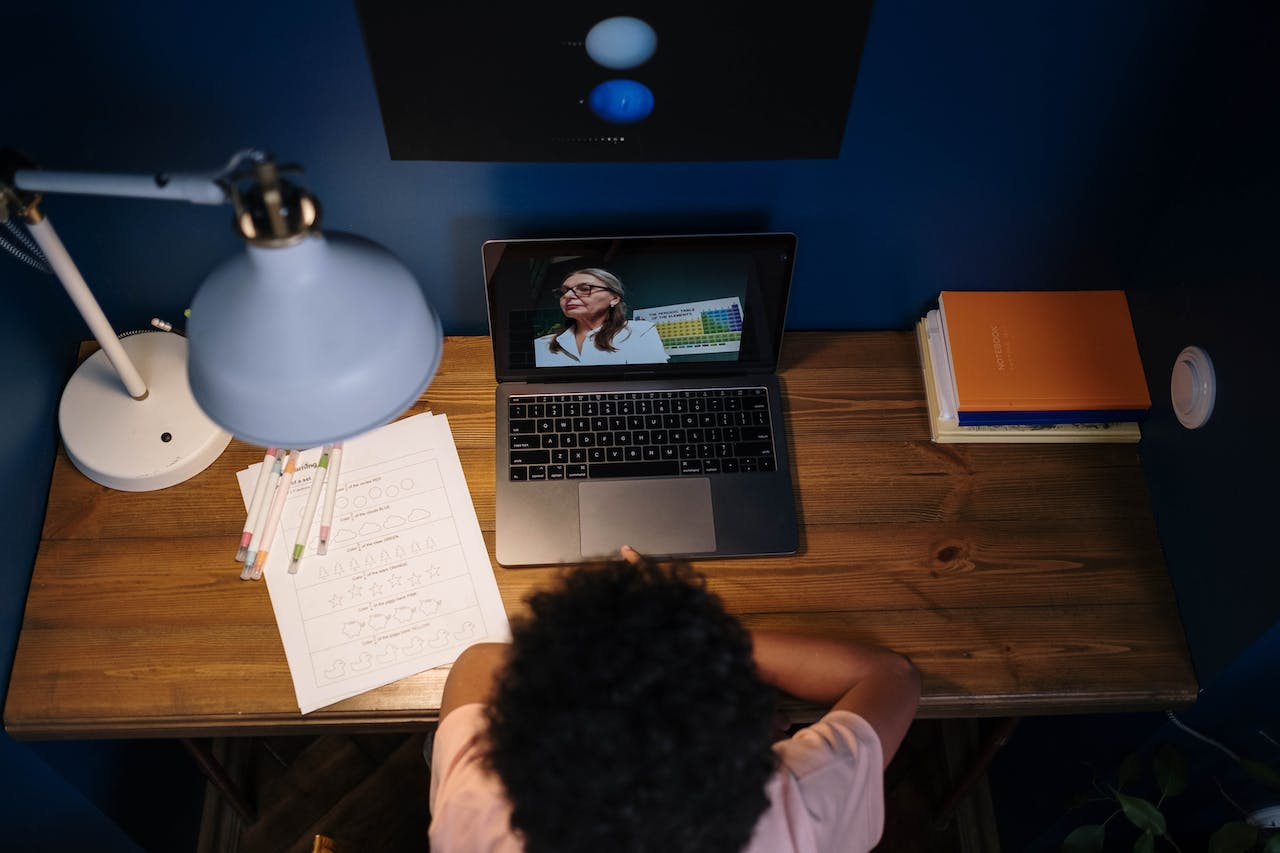
If you’re wondering how to learn Spanish or searching for the best way to learn Spanish, you’re in the right place. Learning a foreign language as incredibly vibrant as Spanish, can be exciting. Whether you want to learn Spanish online or on your own, various effective methods are available. One key to success is creating a consistent routine. If you say you want to learn Spanish, consider incorporating it into your daily life. Immerse yourself in the language by watching Spanish dramas, dining at Spanish restaurants, and listening to Spanish music in your activities.
Online resources like the language learning app play a crucial role in the best ways to learn Spanish and appreciate the Spanish culture. Platforms like language-learning apps and online courses offer flexibility and the ability to progress at your own pace. The US Foreign Service Institute recommends practical vocabulary acquisition as a foundation for mastering a new language, and Spanish, a Romance language, shares similarities with other languages. Engaging with native speakers through Spanish tutoring or language exchange enhances your Spanish grammar and provides real-life context for your studies.
To strengthen your spoken Spanish, dedicate time to watching Spanish telenovelas with English subtitles, then progress to watching with Spanish subtitles as your skills improve. Incorporate coffee break Spanish – regular practice sessions – into your routine. Explore Spanish podcasts, listen to Spanish songs, and watch movies to expose yourself to various accents and expressions. Remember, your Spanish learning experience is a unique journey, and each step contributes to your growth in language skills and cultural understanding.
Here are some effective ways to study Spanish and become as fluent as native Spanish speakers:
1. Take a Formal Course

If you’re seriously considering how to learn Spanish and aiming for the best way to learn Spanish, taking a formal course is a highly effective option to improve your Spanish pronunciation. Formal in-person or online courses provide a structured and comprehensive approach to language acquisition.
They are designed by an experienced Spanish tutor who understands the importance of learning a language. The courses often follow a curriculum that covers essential aspects of the language, from basic vocabulary to complex Spanish sentences and grammar rules. Engaging with a formal course allows you to systematically build your skills, ensuring a well-rounded understanding of Spanish.
A great choice for taking formal Spanish-speaking courses is the Spanish Explorer. This platform offers online courses, making it one of the best ways to learn Spanish without the constraints of a physical classroom. Spanish Explorer caters to different Spanish class proficiency levels, including beginner Spanish courses, providing a tailored learning experience to improve your Spanish sentences.
Their courses include:
- spoken Spanish
- vocabulary enrichment
- practical language use
Aligning with the recommendation of the US Foreign Service Institute for practical vocabulary acquisition. Additionally, the platform often incorporates multimedia elements, such as a Spanish movie and audio resources, to enhance the learning experience. By enrolling in a formal course with Spanish Explorer, you gain access to structured lessons and join a community of learners, fostering a supportive environment for your Spanish learning journey.
2. Download Language Learning Apps

If you’re keen on learning Spanish effectively, exploring language learning apps presents itself as a top-notch option. These apps offer interactive lessons and engaging games, making learning enjoyable and impactful. Popular platforms provide user-friendly interfaces with lessons covering Spanish word grammar, vocabulary, and pronunciation. The bite-sized nature of the lessons allows for flexible integration into your daily routine, facilitating learning at your own pace and promoting the best way to learn Spanish on your own.
Spanish language apps go beyond the basics, incorporating multimedia elements such as Spanish movies to enhance the cultural dimension of learning. Exposure to real-world language usage in diverse contexts reinforces what’s taught in lessons. For beginners, these apps cater to foundational aspects, offering lessons tailored to beginner Spanish levels and providing a platform to build a robust language base. Incorporating listening skills in the Spanish lesson exercises through interactive games and audio components ensures a comprehensive language learning experience. Moreover, applying words and phrases, including Spanish adjectives, helps learners grasp the language’s everyday utility in real-life scenarios.
Language-learning apps contribute to a consistent learning journey by employing push notifications and progress-tracking features. This keeps learners motivated and actively engaged in the Spanish learning process. Integrating these apps into your routine makes your mobile device a valuable tool for mastering Spanish, transforming language learning from a task into an enjoyable and accessible part of your daily life.
3. Practice with Spanish Native Speakers

Improving your Spanish skills is greatly enhanced by practising with a native speaker, and you don’t necessarily need to travel abroad for this valuable experience. In the digital age, numerous online platforms connect language learners with native speakers worldwide, allowing them to engage in conversations conveniently without leaving their homes. These platforms offer opportunities to interact with Spanish-speaking people through video calls, voice messages, or written communication, enabling you to practice speaking, listening and even receive feedback on your pronunciation and grammar.
One effective method is to join language exchange sites or apps where you can connect with native Spanish speakers looking to practice your language in exchange for practising theirs. One helpful approach is partnering with a language exchange to mutually gain fluency. Plus, with language tutoring platforms, you get to learn straight from the horse’s mouth – native speakers who not only know their stuff but also give lessons custom-made for your skill level. Engaging virtually with this gives you a real taste of Spanish, letting you hear different accents and everyday phrases, which makes your learning trip all the more enriching.
Joining online chat groups or forums focused on Spanish not only lets you dive into the language but also connects you with a community of fellow learners and native speakers who are equally jazzed about it. Diving into these digital gatherings, you get to throw out questions, share your own tales, and engage in chats—building a supportive network that adds an extra kick to your Spanish mastering journey. Hooking up with folks who speak Spanish natively on these online platforms lets you boost your language skills, all without needing to hop on an international flight.
4. Watch Spanish Movies and TV Shows

As you watch Spanish TV and a movie, accompanied by English subtitles is a highly effective strategy for enhancing your listening skills and overall proficiency in the language. Soaking up the lingo straight from native speakers in real-world settings gives your language skills a serious boost. Diving into diverse accents, speech patterns, and chat styles gives you the edge in picking up Spanish’s subtle verbal hints. Following the dialogue with English subtitles reinforces the association between spoken and written words, expanding your listening skills and vocabulary simultaneously.
Adding Spanish TV shows and movies to your study grind gives you a firsthand look at the various cultural settings where the language is alive. This deepens your grasp on slang, phrases and the way language is used in daily life. By watching the scenes and characters, you not only pick up on spoken language but also non-verbal cues, giving your Spanish skills a serious boost. Diving into this immersive journey is like applying your Spanish skills in real-life scenarios, cleverly linking the stuff you learn from books to actual conversation.
To make the most of this learning method, pick shows that match your Spanish skills. Start with simple stories and then slowly move on to tougher plots. You’ll find a whole host of Spanish content on various streaming sites, from gripping movies and binge-worthy TV shows to insightful documentaries. Regularly integrating enjoyable and culturally enriching Spanish-language media like films, shows, and documentaries into your routine can steadily help improve your listening abilities and positively contribute to your journey of learning Spanish.
5. Read in Spanish

Diving into the world of Spanish via reading can be an effective, customizable strategy that syncs up perfectly with your current skill level. A great starting point for beginners is children’s textbooks or simple books designed for early language learners. These resources dive right in, breaking down key vocabulary, sentence formation, and typical phrases with no fluff. Reading simple stories in Spanish helps you grasp the fundamentals of the language while enjoying engaging narratives designed for easy comprehension. Pictures in kids’ books aren’t just for fun, and they help you get the gist of the story, making learning not only more enjoyable but also pretty effective.
As you progress to an intermediate level, exploring graded readers or easy-to-read novels in Spanish becomes beneficial. Graded readers are specifically designed to match different proficiency levels, providing a gradual increase in complexity. With these books, you’ll not only grow your word bank but also bump into a diverse mix of sentence styles. Novels written for young adults or those specifically crafted for language learners offer engaging content without overwhelming complexity. By embedding clues in the narrative, you’re not just reading – you’re discovering a more profound understanding of Spanish, paving your way from beginner level to fluency.
For those who’ve got a strong grip on the language, diving headfirst into genuine Spanish novels, daily papers, or glossy mags can be an exciting uphill battle. Reading novels, articles, or essays written by people in Spanish-speaking countries exposes you to diverse writing styles, cultural nuances, and a broader range of vocabulary. Here is a one-sentence rewrite: Reading works by Spanish-speaking authors exposes you to diverse perspectives and vocabulary to enhance comprehension. Reading widely exposes you to new perspectives. Tailoring your reading materials to your proficiency level ensures a gradual and enjoyable progression in your speaking Spanish journey.
6. Immerse Yourself

To immerse yourself in learning Spanish, creating a language-rich environment is crucial. Begin by surrounding yourself with Spanish-language materials in your daily life. Change the language preferences on your devices, such as your phone, computer, or social media accounts, to Spanish. This simple adjustment consistently exposes you to the language, helping you become familiar with common phrases and terminology. As you navigate through apps or browse the internet, you’ll naturally encounter and absorb Spanish words, contributing to a gradual and immersive learning experience.
Listening to Spanish TV shows, podcasts, and music is an effective way to develop your listening skills and become attuned to different accents and expressions. Choose content that aligns with your proficiency level, starting with more straightforward narratives and progressing to more complex dialogues as you advance. Spanish-language TV shows and movies offer visual context, aiding comprehension, while podcasts provide an opportunity to hear authentic conversations and diverse linguistic nuances. Incorporating Spanish music into your routine introduces you to colloquial phrases and rhythm, making language learning enjoyable and rhythmic.
To further enhance your immersion, consider labelling items in your surroundings with their Spanish names. This association reinforces vocabulary and helps you think in Spanish. Engaging in daily activities, such as reading news articles or even thinking about your day in Spanish, also contributes to the immersion process. The goal is to integrate Spanish into your daily life, making it a natural part of your routine rather than a separate learning task. Creating an environment where the language surrounds you will pave the way for a comprehensive and immersive “Spanish learning journey.”
7. Use flashcards or Vocabulary apps

When it comes to learning a new language like Spanish, flashcards and vocabulary apps are the real MVPs; they not only help you nail down those tricky new words but also give you a deeper insight into their meanings. Flashcards and vocab apps are aces at giving you a leg up in nailing down useful words and phrases, key for getting the hang of Spanish or any new language.
Flashcards and vocab apps? They’re ace for spaced repetition, really helping to nail those language skills. So, what we’re talking about here is a smart technique called spaced repetition. It’s like this – you learn something and then review it at different points in time that get longer and longer apart. Pretty neat for remembering stuff long-term, right? Spaced repetition techniques help us remember information long-term by reviewing it at increasing intervals over time. Vocabulary apps and flashcards, you see, play a neat trick – they show words or phrases repeatedly but spaced out over time to help lock them into your long-term memory.
Plus, these apps make learning new vocabulary a dynamic and fun process. Many vocabulary apps make learning new words fun through games. Here is a one sentence rewrite: These apps make learning vocabulary fun through games and give quick feedback to help you track your progress in understanding new words.
Flashcards and vocab apps? They’re great, man. They give you feedback on the spot so you can see how you’re doing and figure out what needs a bit more work. Understanding words goes beyond their definitions; using tools that give audio pronunciations, sample sentences, and visuals can truly help grasp how to use them in real-life situations.
So, what’s the scoop on flashcards and vocab apps? They’re real MVPs in language learning because they drill new words into your brain with regular practice, grab your attention with interactive elements, and give you insightful feedback that can supercharge your journey to mastering Spanish. Adding these learning tools to your study sessions can really boost and cement your Spanish word bank.
8. Practice Thinking in Spanish

Engaging in the practice of thinking in Spanish is a highly effective method in the realm of how to learn Spanish. Practising Spanish by thinking in it really boosts your language learning speed, making you feel at home with the lingo faster. You reinforce vocabulary, grammar, and sentence structure when you actively think in Spanish. Practising mentally translating your thoughts and surroundings into Spanish as you go about your day can help reinforce your grasp of the language’s vocabulary, grammar, and sentence structure.
To use this technique in your routine, try narrating your daily activities or thoughts in Spanish. Describe what you see, what you’re doing, or how you feel using Spanish words and phrases. Regularly thinking in Spanish sharpens your ear for the language and bridges the divide between just understanding it and actually using it.
Training your mind to think in Spanish hones your sentence-building abilities, setting the stage for more natural conversations. In essence, thinking in Spanish really ramps up your language-learning game – it’s like getting a backstage pass to the subtleties and finer points of the language that you just don’t get otherwise.
9. Meet People with the Same Interests

Becoming part of a group that’s fired up about getting fluent in Spanish lets you be in a place where it’s cool to swap learning hacks, flex your conversation skills, and trade handy tools. Interacting with individuals on the same target language journey can enhance motivation and create a sense of camaraderie. Connecting with fellow language learners in-person or online lets you practice through real conversations while reinforcing what you study.
To find like-minded learners, explore Spanish learning events in your local community or consider joining online groups. Check out Facebook and other socials. They’re teeming with groups geared towards language learning; perfect spots to plan gatherings, trade useful resources, and engage in insightful discussions. These groups can build community and allow you to practice Spanish in a welcoming setting.
Joining these social gatherings, whether online or face-to-face, lets you use Spanish in a real-world context. You’ll get better at speaking and start to understand the variety of accents and phrases out there. Linking up with others who are also on the journey to master Spanish can create a dynamic atmosphere that supercharges your linguistic growth.
10. Practice Regularly

When considering how to learn Spanish, the fundamental key lies in practising regularly. Consistency is the linchpin of language acquisition. Making a habit of engaging with Spanish regularly is more valuable than sporadic, intensive sessions. Repetition helps solidify vocabulary, grammar, and pronunciation, turning them into second nature. Regular practice ensures that you continually build on what you’ve learned, preventing the loss of newly acquired language skills.
To establish a routine of practising Spanish regularly, integrate the language into your daily life. Use Spanish words regularly in various contexts, whether through simple conversations, jotting down thoughts in Spanish, or even incorporating Spanish into your digital communication.
Consistent exposure to the language, whether through watching Spanish TV, listening to podcasts, or using language learning apps, reinforces your learning and keeps your skills sharp. Embrace the concept of “coffee break Spanish,” short and regular language practice sessions that fit seamlessly into your daily schedule. This consistent and incremental approach supports learning Spanish independently and contributes significantly to your overall Spanish learning journey.
Conclusion
Effective Spanish language learning involves a multifaceted approach that encompasses various strategies. Formal courses, having a Spanish tutor, using online language learning apps, and connecting with Spanish-speaking people through digital platforms provide structured learning opportunities. Joining learning Spanish events or online groups with shared interests contributes to a sense of community and facilitates real-world practice.
Watching Spanish TV shows and movies, especially with subtitles, and thinking in Spanish enhance listening skills and language immersion. Scanning books that align with your language skills, like kids’ stories, level-specific readers or real-world literature, is a solid strategy to boost word bank and understanding. Adjusting your tech gear to Spanish and infusing daily routines with cultural elements not only amplifies exposure but also integrates the language seamlessly into everyday life. Using flashcards and word apps can help. They use a method called spaced repetition, it’s pretty interactive and gives you feedback right away.
To continue learning Spanish effectively, tailor the approach to fit your needs and lifestyle. Meshing these varied tactics into your daily grind, you’ll brew an awesome and all-consuming language adventure. Every method pitches in uniquely, hitting different areas of the language learning game to ensure your journey is as comprehensive and effective as it can be. Remember, sticking with it and engaging fully while exploring diverse study methods is key to acing Spanish.


Sorry, the comment form is closed at this time.